
According to authors Nick Zukin and Michael Zusman, “Delicatessen aficionados might cringe at the idea of homemade pastrami cooked in the oven since wood smoking is supposed to be the customary cooking method.” They say that contrary to popular belief, some of the most heralded pastrami and smoked meats involve no wood smoke at all.
Jump To
In his must-read book, Save the Deli, journalist and cultural writer David Sax scandalized readers when he wrote that the smoky flavor in commercially-produced pastrami comes from fat drippings that sizzle and smoke on the gas element of the ovens used to roast the meat.
Like all pastrami recipes, this one begins with cured or “corned” beef brisket. But here, the brisket is steam-roasted in the oven until tender. Smoked paprika lends the smoky flavor traditionally found in pastrami without muting the coriander and black pepper seasonings.
Yes, yes, I know. The process to make this deli classic is time-consuming—5 days to brine plus 3 to 4 hours to cook. But trust me, you’re gonna love it.
Jump To

Why Our Testers Loved This
The testers were amazed that they could recreate premium deli-worthy pastrami at home. Linda Pacchiano described the flavor as comparable to the meat served at the “best delis in New York City.”
Suzanne Fortier was incredibly pleased that it was economical to make her own cured meat and described the finished pastrami as “tender, spicy, and delicious.”
Notes on Ingredients

- Kosher salt–This makes up the foundation of your brine, allowing the meat to retain moisture and become tender, ensuring perfect pastrami. To avoid making a brine that is too salty, you must weigh your salt. Crystal sizes can vary from brand to brand, significantly changing the salt level in the brine when measured by volume.
- Pink curing salt–This gives the meat its pinkish hue, but its purpose isn’t merely cosmetic. This salt, which contains sodium nitrite, stops bacterial growth during the lengthy curing process and helps to preserve the meat’s flavor and texture. Don’t even think about omitting it.
- Sugar and honey–This recipe uses a combination of granulated sugar, brown sugar, and honey in the brine to help tenderize the meat and add flavor. Avoid using very strong flavored honey, such as buckwheat or chestnut, as the flavor may be overwhelming.
- Beef brisket–You can make this with the point or flat section of the brisket. The point will have more marbling and fat than the flat. Make sure that your brisket has a fat cap at least 1/4 inch thick.
How to Make Pastrami
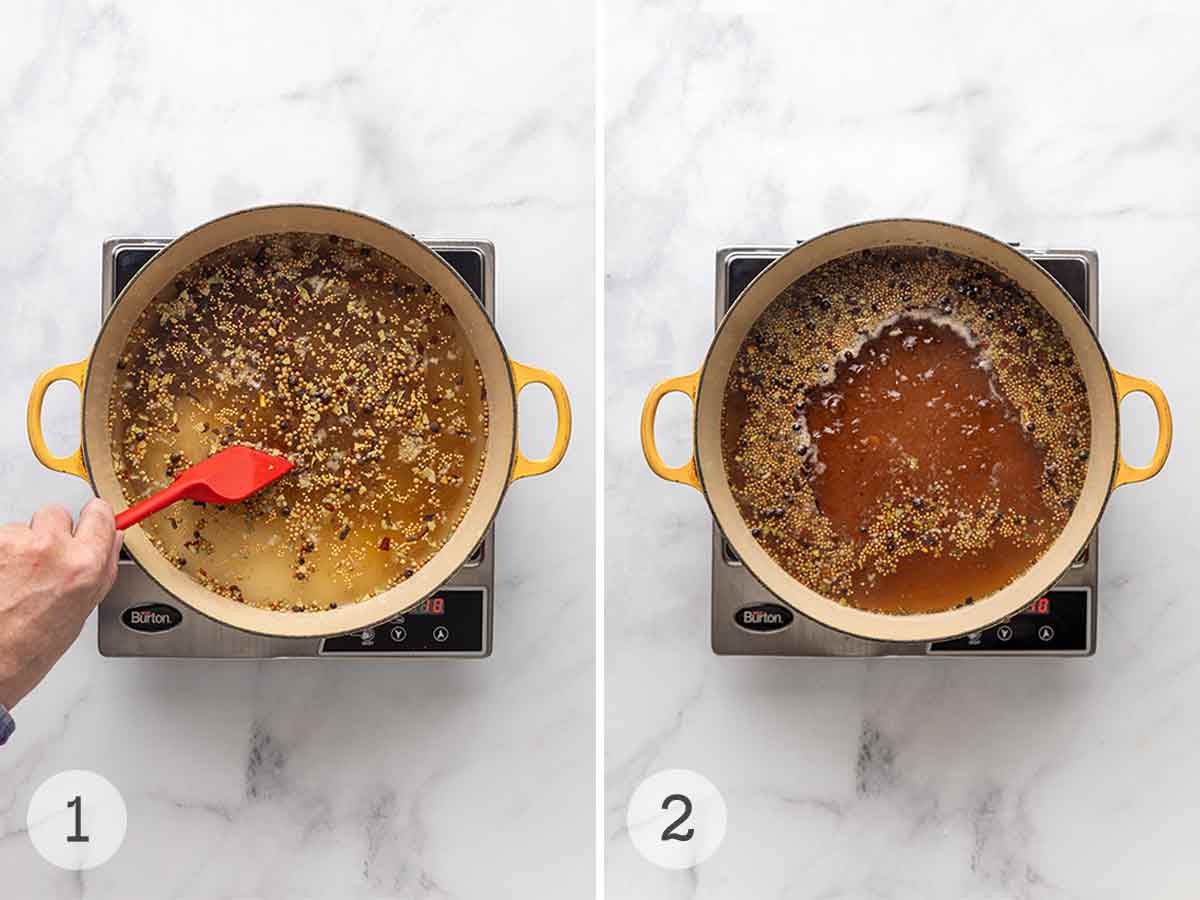
- Fill a large pot with 3 quarts of cold water. Add the sugars, honey, spices, and garlic.
- Bring to a boil over high heat. Stir until the salt and sugar are fully dissolved.
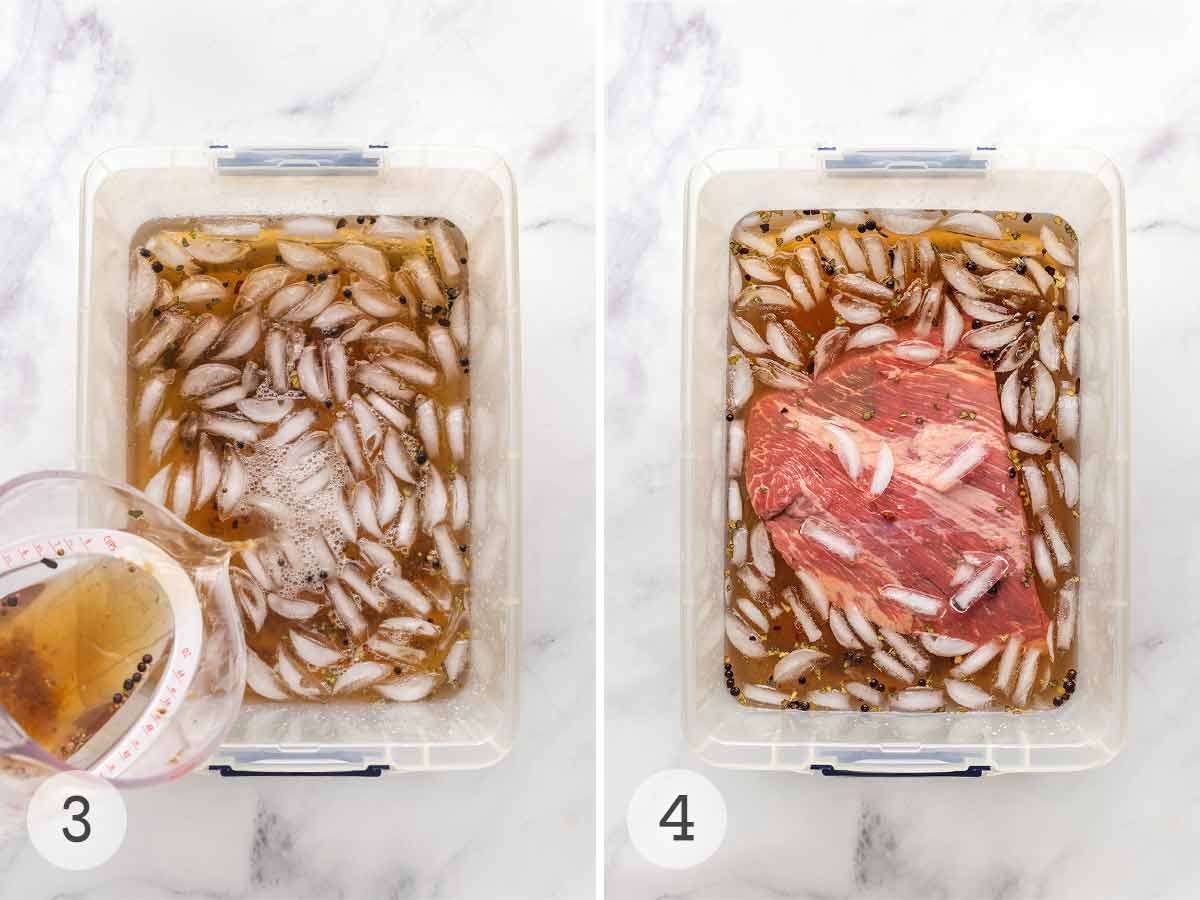
- Add 3 quarts of ice-cold water to a large container. Pour the hot brine into the container and stir until cold.
- Trim the brisket, if necessary. Place the brisket in the cold brine.
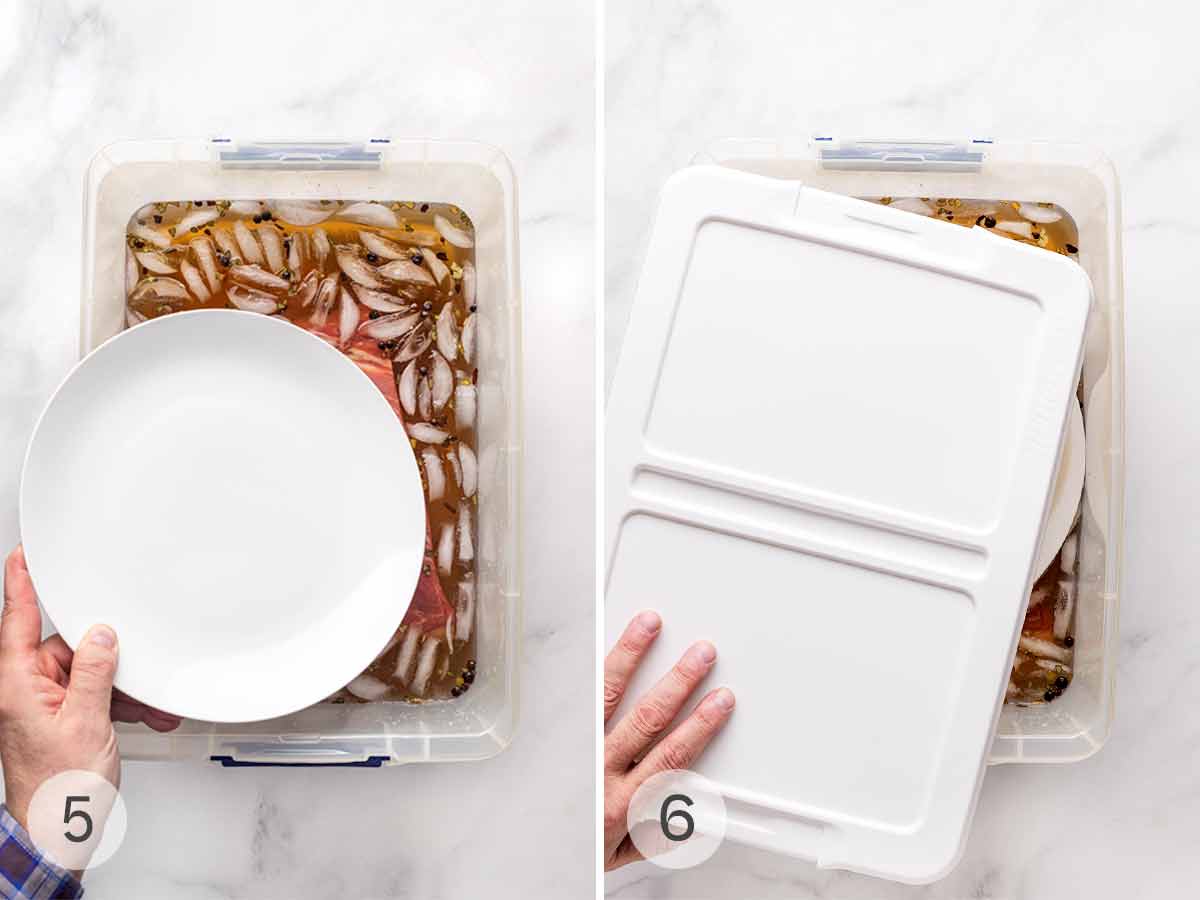
- Dunk the brisket in the brine, using a heavy object to keep it submerged.
- Cover and refrigerate for 5 days, flipping the brisket once each day.
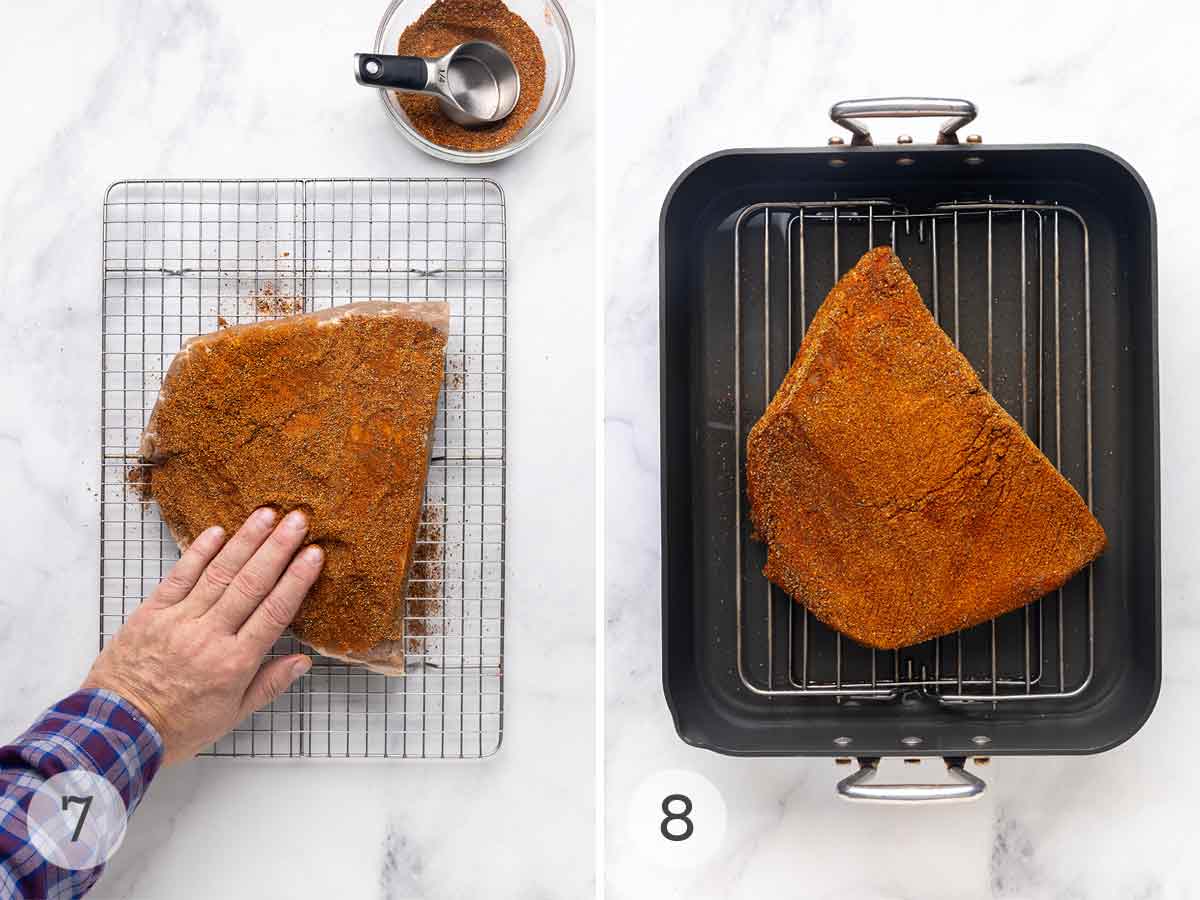
- To make the spice rub, combine the coriander, pepper, and paprika in a small bowl. Dry the brisket with paper towel. Rub 1/4 cup of spice rub on the non-fatty side of the brisket, then flip it and rub the fatty side with the remaining spice blend. Let it rest for 2 hours at room temperature.
- Preheat the oven to 300°F. Set a rack inside a large roasting pan and pour 4 cups of cold water into the bottom of the pan. Set the brisket on the rack, fatty side up.
- Cover with a double layer of aluminum foil. Bake until the internal temperature reaches 200°F. Let rest for at least 30 minutes. Slice the brisket against the grain into thin slices.
Smoked Pastrami Variation
Want the true-blue flavor and experience of smoked pastrami? This version takes more time than the homemade oven-roasted pastrami, but the resulting depth of flavor makes it worth the extra effort.
With the wide variety of smokers and grills available on the market, we can offer only general instructions on how to perfect this superior pastrami. But as with all successful meat smoking, the key is low and slow.
Prepare the homemade pastrami recipe below through step 5, omitting the paprika in the spice rub.
In an outdoor smoker or grill, smoke the meat, fatty side up, at 225°F (107°C) for 6 to 8 hours, or until it reaches an internal temperature of 160°F (71°C) to 175°F (79°C). Oak, maple, pecan, hickory, or fruit woods may be used, depending on availability and preference. (Avoid mesquite, as it gives a harsh flavor to long-smoked meats.)
Preheat the oven to 300°F (149°C). Place the brisket in a roasting pan and tightly cover the brisket and pan with a double layer of aluminum foil. Bake until the meat reaches an internal temperature of 200°F (93°C), 1 1/2 to 2 hours.
My Pastrami Spice Rub Variation
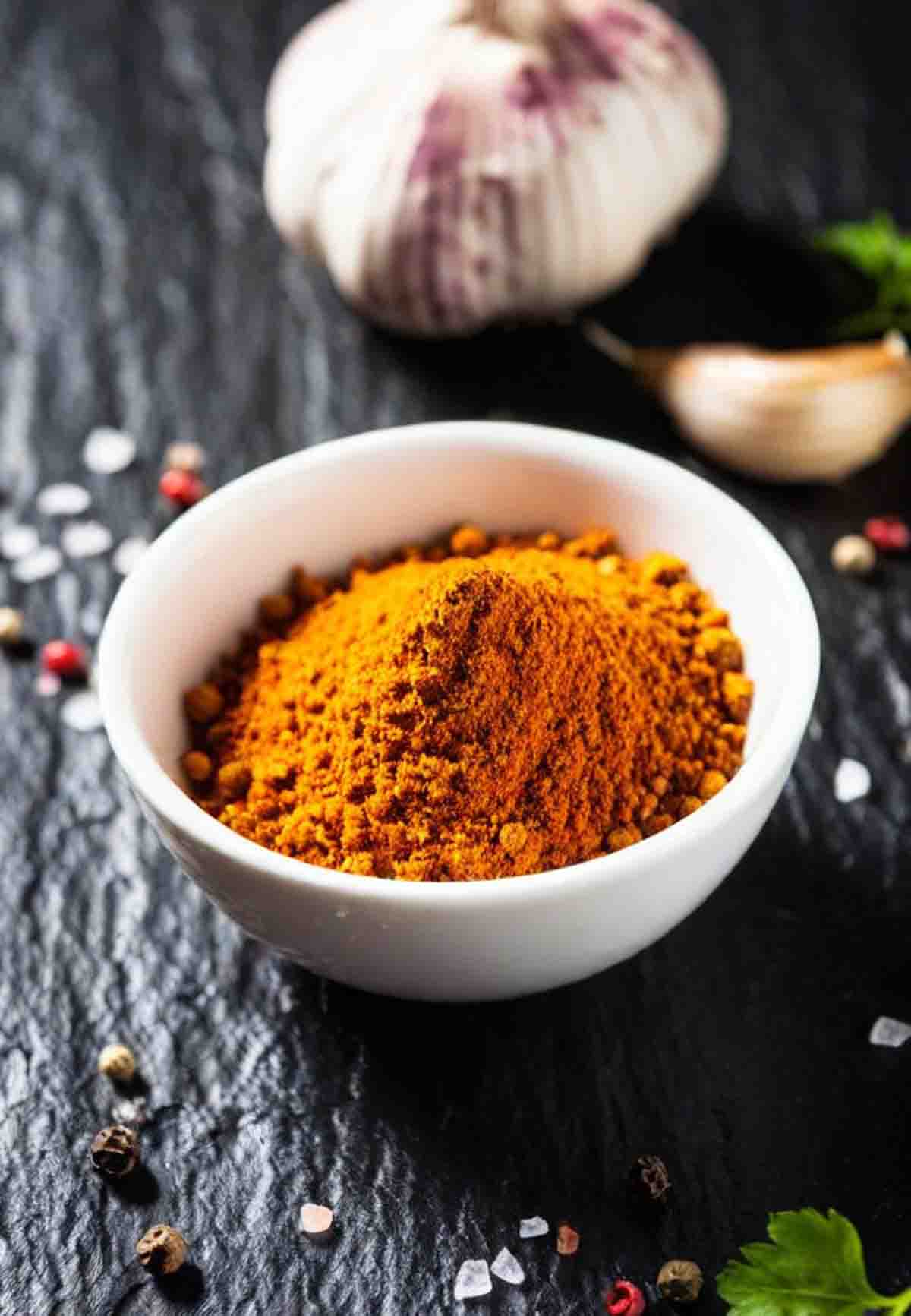
Sometimes, I want a bit more oomph for the coating on my pastrami, so I use my secret recipe spice blend. Use this in step 5 below.
- 2 tablespoons ground coriander
- 2 tablespoons ground black pepper
- 1 tablespoon mustard powder
- 1 tablespoon garlic powder
- 1 tablespoon smoked paprika
- 2 tablespoons brown sugar
- 1 tablespoon onion powder
This yields about 3/4 cup of rub, more than enough to cover a 4-pound brisket generously. The quantities can be tweaked based on your preference for certain flavors. For instance, if you enjoy a more pronounced garlic or smoky taste, go for it and bump up the garlic powder or smoked paprika.
Common Questions
The most significant difference between the two types of meat lies in the cooking process. Corned beef is spice and salt-cured and then typically boiled or steamed. Pastrami is seasoned similarly, generally peppered heavily, and then smoked–but it can also be slow-baked as in this recipe.
Why, I’m glad you asked. Despite what many think, corned beef did NOT originate in Ireland. (Gasp, I know!) The first generations of Irish immigrants to the US developed the recipe out of necessity. A Saint Patrick’s Day feast in Ireland included boiled bacon, but the immigrants were too poor to afford pork and bacon products. Instead, they used a more affordable cut of meat: beef brisket.
As stated in The Little Foods of the Mediterranean by Clifford Wright, pastrima was first made in Turkey during the Ottoman Empire and made its way along the spice route to Romania. Romanian Jewish immigrants, who coined it “pastrami,” brought the recipe to the United States, and the meat became famous in New York City.
It’s traditionally made from brined and cooked beef brisket but it can be made from goose, goat, and mutton as well.
For cold-cut pastrami, we love mustard, Swiss, a little mayo, and lettuce and tomato. On our hot pastrami sandwiches, it’s just mustard and melty Swiss, grilled to perfection. The bread choice is important here, too. Rye is the way to go for a classic pastrami sandwich.
Pastrami is a good source of protein and essential nutrients, including iron and vitamin B12, so it can be included as part of a healthy diet. It is high in saturated fat and sodium, though, so it should be enjoyed in moderation.
The crystal size of kosher salt can vary dramatically from brand to brand. Salts with smaller, finer crystals, such as Morton Kosher Salt, take up less space than larger crystals, such as Diamond Crystal. Measuring by weight ensures that the saltiness of the brine is consistent regardless of which brand of salt you use.
Pro Tips
- Save time and have your butcher trim the fat cap on the brisket to 1/4-inch (6 mm).
- If you find it difficult to keep the brisket submerged in the brine, place something heavy (a plate of a few canned goods are great for this!) in a sealed plastic bag and set it on top of the brisket to weigh it down.
- If your brisket is too big to fit into the brining container in one piece, cut it in half.
- The meat will be easiest to slice after it has cooled. If you don’t need to serve it right away, pop it in the refrigerator for a couple of hours before slicing thin.
- This homemade pastrami recipe is suitable for gluten-free and dairy-free diets.
Storage Instructions
Pastrami can be stored, tightly wrapped in plastic or aluminum foil in the refrigerator for up to 1 week. For longer storage, freeze individual portions tightly wrapped in plastic or sealed bags for up to 6 months.
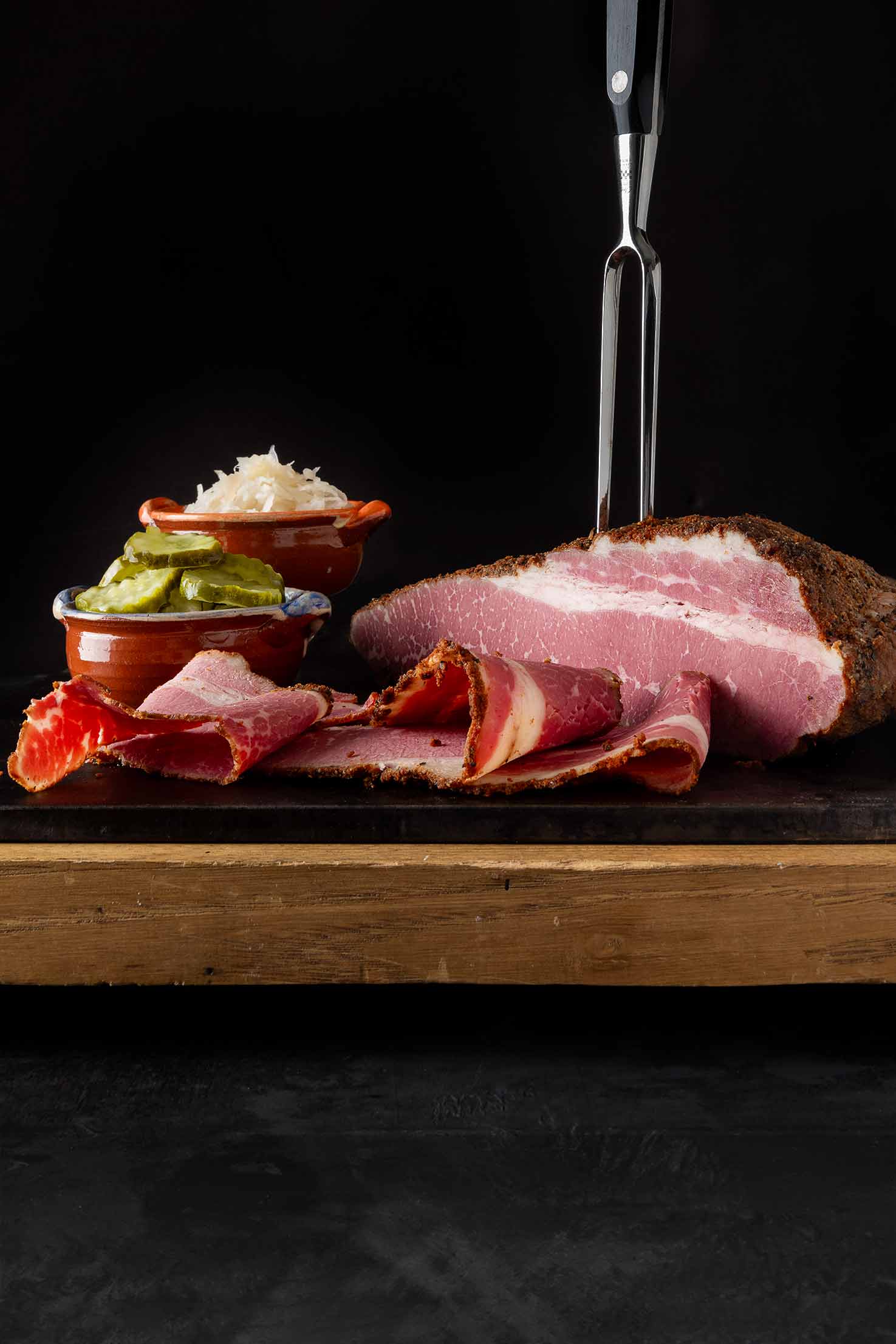
Write a Review
If you make this recipe, or any dish on LC, consider leaving a review, a star rating, and your best photo in the comments below. I love hearing from you.–David
Turned out delicious!! Served it on homemade rye bread with mustard, melted cheese, and a side of slaw. I will definitely make this again.
Joan Hunter Mayer
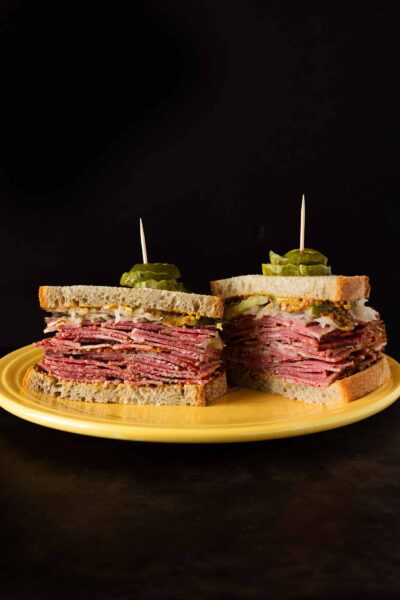
Homemade Pastrami
Ingredients
For the brine
- 3 quarts ice-cold water, for the brine
- 10 1/2 ounces kosher salt, about 2 cups Diamond Crystal brand OR 1 heaping cup Morton's brand
- 1 3/4 teaspoon pink curing salt, (a mixture of 6.25% sodium nitrite, salt, and a touch of red dye, also known as Prague Mix #1 or Instacure #1 or Curing Salt #1)
- 1 cup granulated sugar
- 1/2 cup firmly packed dark or light brown sugar
- 1/4 cup honey
- 2 tablespoons pickling spice
- 1 tablespoon whole coriander seeds
- 1 tablespoon yellow mustard seeds
- 4 cloves garlic, minced
- 3 quarts ice-cold water, for the brine
- One (3- to 4-pound) beef brisket
- 4 cups cold water, for humidifying the oven
For the spice rub
- 1/4 cup ground coriander
- 2 tablespoons freshly ground black pepper
- 2 tablespoons smoked paprika
Instructions
Make the brine
- Fill a large stock pot with 3 quarts (12 cups) of water. Add the kosher and pink curing salts (it's essential to weigh the kosher salt for accuracy rather than go by a volume measure, trust me), granulated and brown sugars, honey, pickling spice, coriander and mustard seeds, and garlic.
- Bring to a boil over high heat, stirring often to dissolve the salt and sugar in the fully. Immediately remove the pot from the heat once the brine boils.
- Add 3 quarts (12 cups) of ice and water to a 2-gallon (or larger) food-safe container that fits in your fridge. Pour in the brine. It should be instantly cool.
- Trim excess fat from the brisket, leaving a 1/4-inch thick layer, which is important for flavor and keeping the meat juicy. Dunk the brisket in the cooled brine.
- Refrigerate the brisket for 5 days, stirring the brine and flipping the meat each morning. If any part of the brisket is touching the container (or another brisket) make sure to rotate it to expose all of the meat to the brine.
Make the spice rub
- Mix together the coriander, pepper, and paprika in a small bowl. (Or mix together my recipe for the spice rub above.)
Roast the pastrami
- Remove the brisket from the brine and pat it dry. Rub 1/4 cup of the spice rub evenly on the non-fatty side, then flip the brisket and rub the remaining spice mixture onto the fatty side.
- Let the brisket come to room temperature, about 2 hours.
- Crank the oven to 300°F (149°C). Pour 4 cups of water into the bottom of a 12-by-15-inch roasting pan. Set a wire rack inside the pan.
- Place the brisket on the rack, fatty side up. Tightly wrap the brisket and roasting pan with a double layer of aluminum foil.
- Bake until the brisket reaches an internal temperature of 200°F (93°C). This should take about 1 hour per pound, or 3 to 4 hours total. Let the meat rest for at least 30 minutes before slicing.
☞ TESTER TIP: If you want to make sandwiches, chill the pastrami in the fridge for several hours or overnight.
- Without trimming the fat, carve the pastrami against the grain into slices as thin as possible without the meat falling apart. Keep the meat tightly wrapped in plastic in the fridge for up to 1 week or frozen for up to 6 months.
Notes
- Time-saving tip–Save time and have your butcher trim the fat cap on the brisket to 1/4-inch (6 mm).
- Submerging the brisket–If you find it difficult to keep the brisket submerged in the brine, place something heavy (a plate of a few canned goods are great for this!) in a sealed plastic bag and set it on top of the brisket to weigh it down.
- Make it fit–If your brisket is too big to fit into the brining container in one piece, cut it in half.
- Slicing pastrami–The meat will be easiest to slice after it has cooled. If you don’t need to serve it right away, pop it in the refrigerator for a couple of hours before slicing thin.
- Storage–Pastrami can be stored, tightly wrapped in plastic or aluminum foil in the refrigerator for up to 1 week or frozen for up to 6 months.
- Dietary–This homemade pastrami recipe is suitable for gluten-free and dairy-free diets.

Nutrition
Nutrition information is automatically calculated, so should only be used as an approximation.
Recipe Testers’ Reviews
Wow. Who knew making your own high-quality homemade pastrami could be so easy? This recipe made a lean, slightly spicy, smoky-tasting (from the smoked paprika) pastrami that certainly could hold its own with anything I’ve ever mail-ordered from New York. At less than $11/pound, it’s pretty economical, too (Katz’s Deli charges $12.50 a pound, unsliced, plus shipping).
I purchased a 3 1/2-pound flat-cut brisket from Whole Foods and mixed up the brine mostly with ingredients I already had in my kitchen. The only unusual ingredient is the pink salt or Prague Powder #1, which is salt and 6% sodium nitrite. I got it online from The Spice House.
I brined the meat in a large ceramic bowl (it wasn’t quite 2 gallons, but it was close enough) and weighted the meat with a plate. The brine is rather pungent, and I was glad to get it out of the fridge after the five-day brining period!
After removing the meat from the brine, I coated it with the spice mixture and, after 2 hours—during which time the meat came to room temperature and my daughter made three batches of cookies—I put the brisket in the oven and cooked it for 3 1/2 hours, or exactly 1 hour per pound. At this point, the thickest part of the meat was 200°F.
The result was sublime: tender, spicy, and delicious. My only critique is that I found it a touch too salty and wonder if you could cut back a bit on the kosher salt.
It’s pretty hard to believe that we cooked up homemade pastrami. Really. We made pastrami. Pastrami is something that you buy at a deli. But we really made pastrami.
Now, it’s not something that would be easy to make any ole time. You need time, and if you want to smoke it like we did, you need a smoker. And patience. If you have all of those things, and if you like pastrami, this is the recipe for you.
We liked slicing it far thinner than the recipe called for. We made an assortment of different sandwiches with the pastrami. Pastrami on rye with cole slaw and Russian dressing (where I grew up, this was called a “Pastrami Special”). And then there’s our version of a Reuben, with pastrami, sauerkraut, Comté cheese, and Dijon mustard on rye, grilled till golden with melty goodness.
The recipe makes quite a lot of pastrami. We’ll seal the rest in packages and freeze them so that the pastrami can be enjoyed in the future. I’m looking forward to it.
I made the oven version of this homemade pastrami recipe. I’ve had pastrami sandwiches at several of the best delis in New York City. This pastrami was very comparable in terms of flavor and smokiness.
Never having cured meat before, I followed the instructions in the recipe precisely, and the pastrami turned out perfectly. Once the brine was made, it was simply a matter of turning the meat and stirring it once daily for five days.
I didn’t have pink curing salt in my pantry, so I ordered it online. The 4-ounce package provided enough for this recipe plus some leftovers, so unless you plan to do a lot of curing, purchase the smallest amount that is offered.
To emulate the full New York experience, I served it on good rye bread with cole slaw and Russian dressing and some steak fries and pickles on the side. It was good to know that I can pretty much recreate that experience in my own kitchen!
Pastrami isn’t exactly what I’d call part of my native cuisine. In fact, I can’t say for sure whether I’d ever even eaten it before making this recipe. But I have brined a lot of meat and smoked a lot of meat, and I think I know what’s good. This was good!
Just to be sure, I took it to a party with a bona fide New Yorker present to see if it met with his approval. His response was, “Apparently, I’ve been buying crappy pastrami all my life.” Everyone raved about it.
I’d like to add a clarification on the ingredients. There is also a curing salt #2 out there, which contains sodium nitrate in addition to sodium nitrite, and that is not what you are looking for. You can buy curing salt #1 online from shops that cater to home sausage makers and hunters, as well as on amazon.com.
How to Smoke Pastrami
The authors don’t give much direction on how to smoke the meat, but I’ll add a few tips. When smoking brisket, whether for this recipe or anything else, you want to smoke it with the fat cap facing up the whole time. Don’t flip it. If you’re using an offset smoker with the firebox to the side, you may want to rotate the brisket 180 degrees during the cooking–but don’t flip it.
The spice rub was perfect. No, it doesn’t need salt, as it’s soaked up plenty from the brine.
I served this at home as a pastrami version of a Reuben sandwich. For the party, I made a sort of pumpernickel flatbread and let people top it with either Reuben toppings or just mustard and pickles, whichever they preferred.
Leftovers went into a potato hash, which would make a nice breakfast with an egg on top. And I’ve seen a recipe for a pastrami eggs Benedict, which is calling my name—lots of good stuff to do with this delicious smoked meat.
Since real pastrami is unavailable where I live, I’ve been looking for an excellent homemade pastrami recipe for a long time. Needless to say, I was thrilled to try this recipe. I had a very large brisket (about 7 to 8 pounds), so I cut it in half and made half in the oven and the other half on my gas grill.
I’ve pickled briskets many times in the past, and this recipe is pretty straightforward. I pickled the brisket for 6 days, then cut it in half and followed the instructions exactly.
The pastrami that I cooked on the grill was much tastier than the one baked in the oven. I thought the oven-baked one was okay but didn’t compare to the grill-cooked one. The grill-smoked pastrami smelled better, tasted better, and was more tender.
I also think it’s important not to use a lean brisket. Look for—or ask your butcher for—a brisket with a 1/4-inch layer of fat on top.
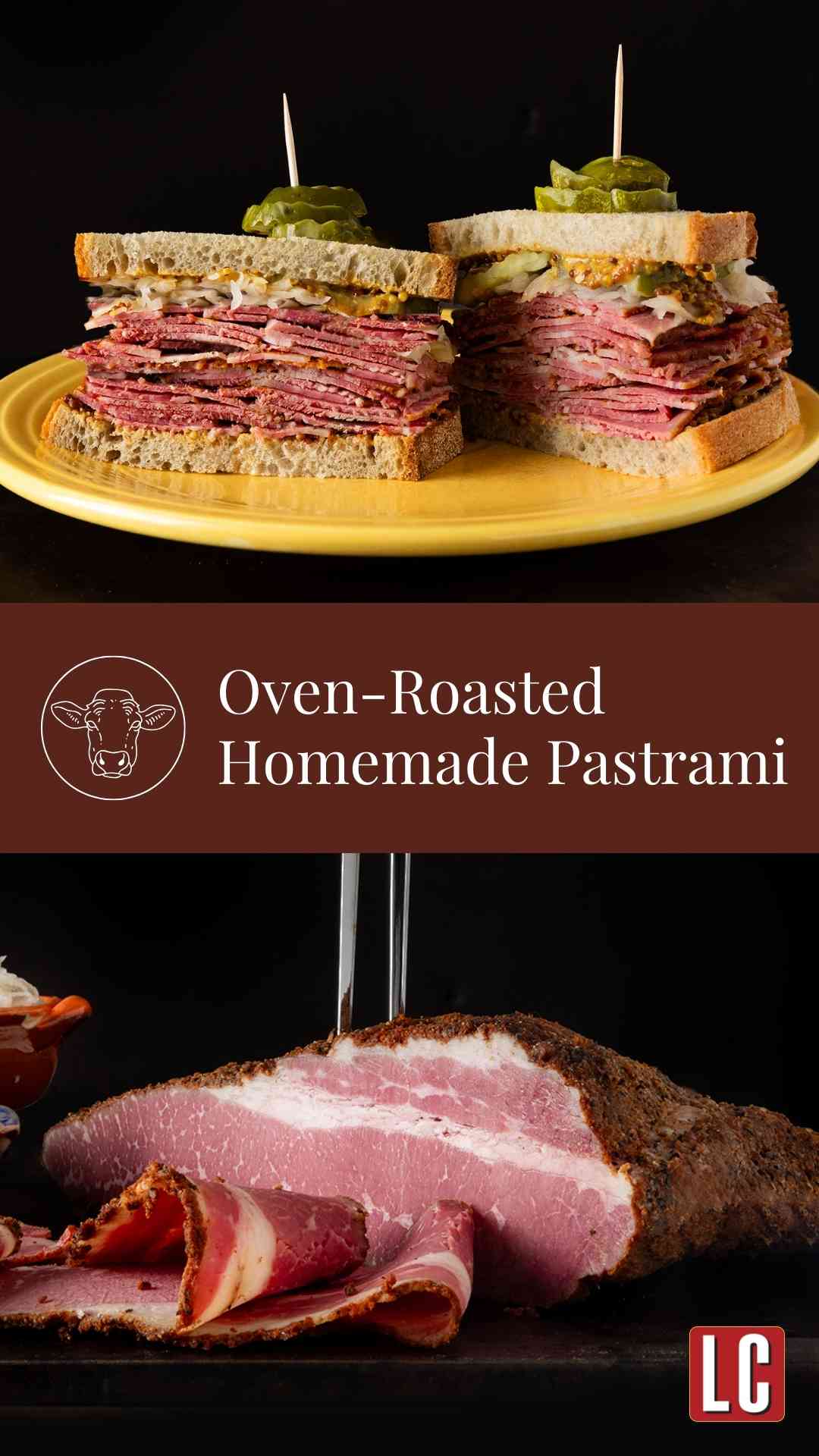
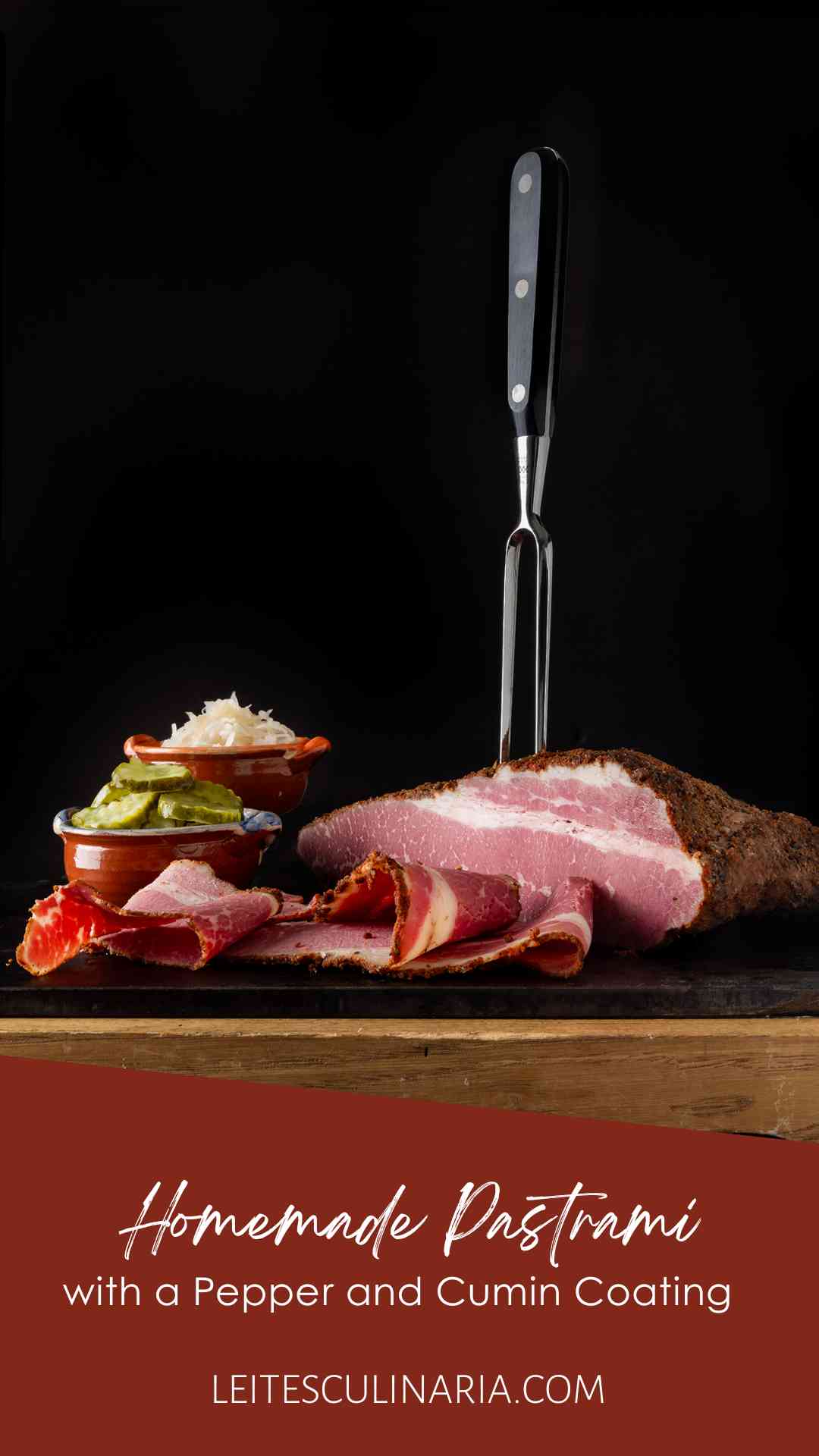
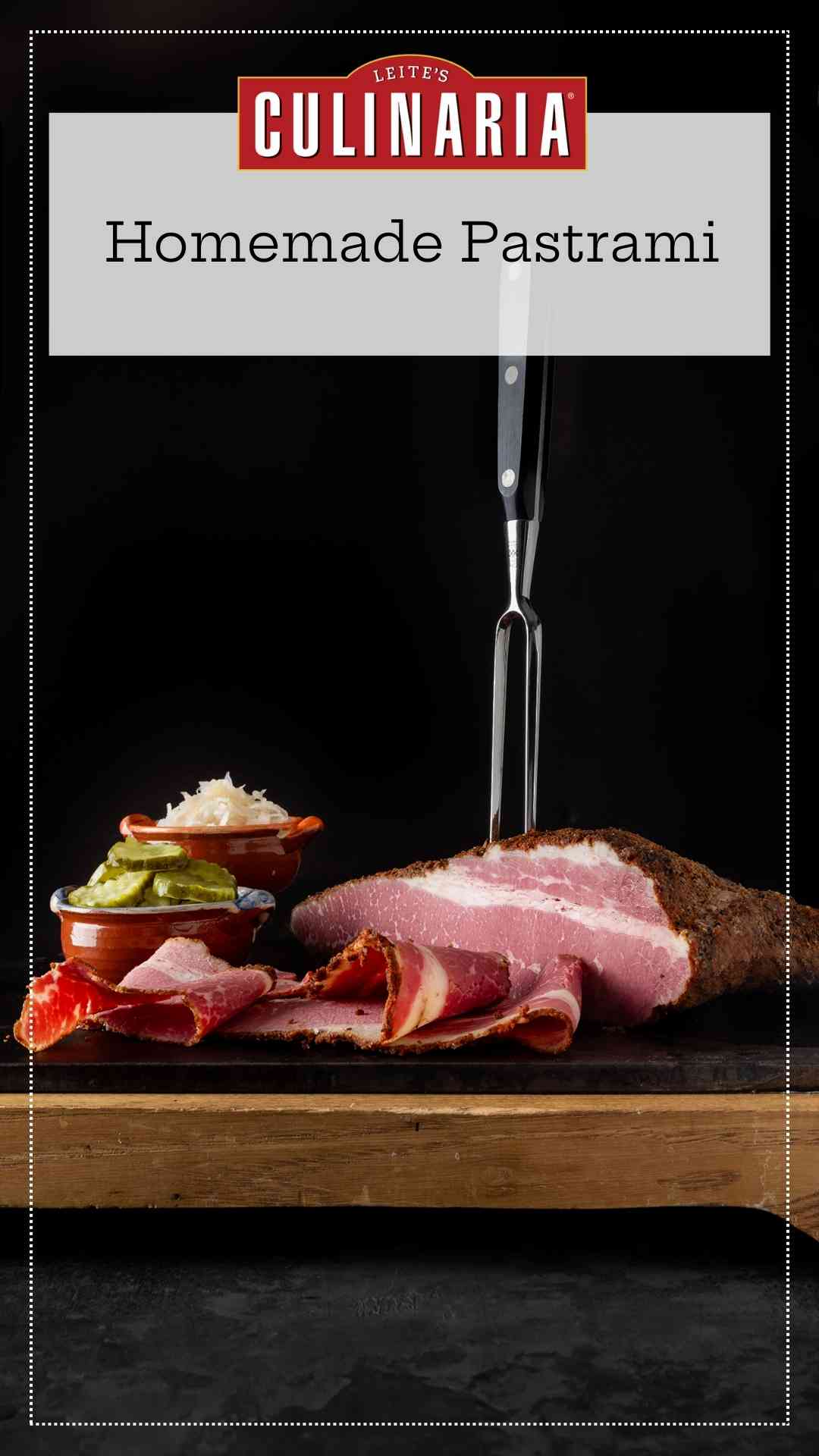
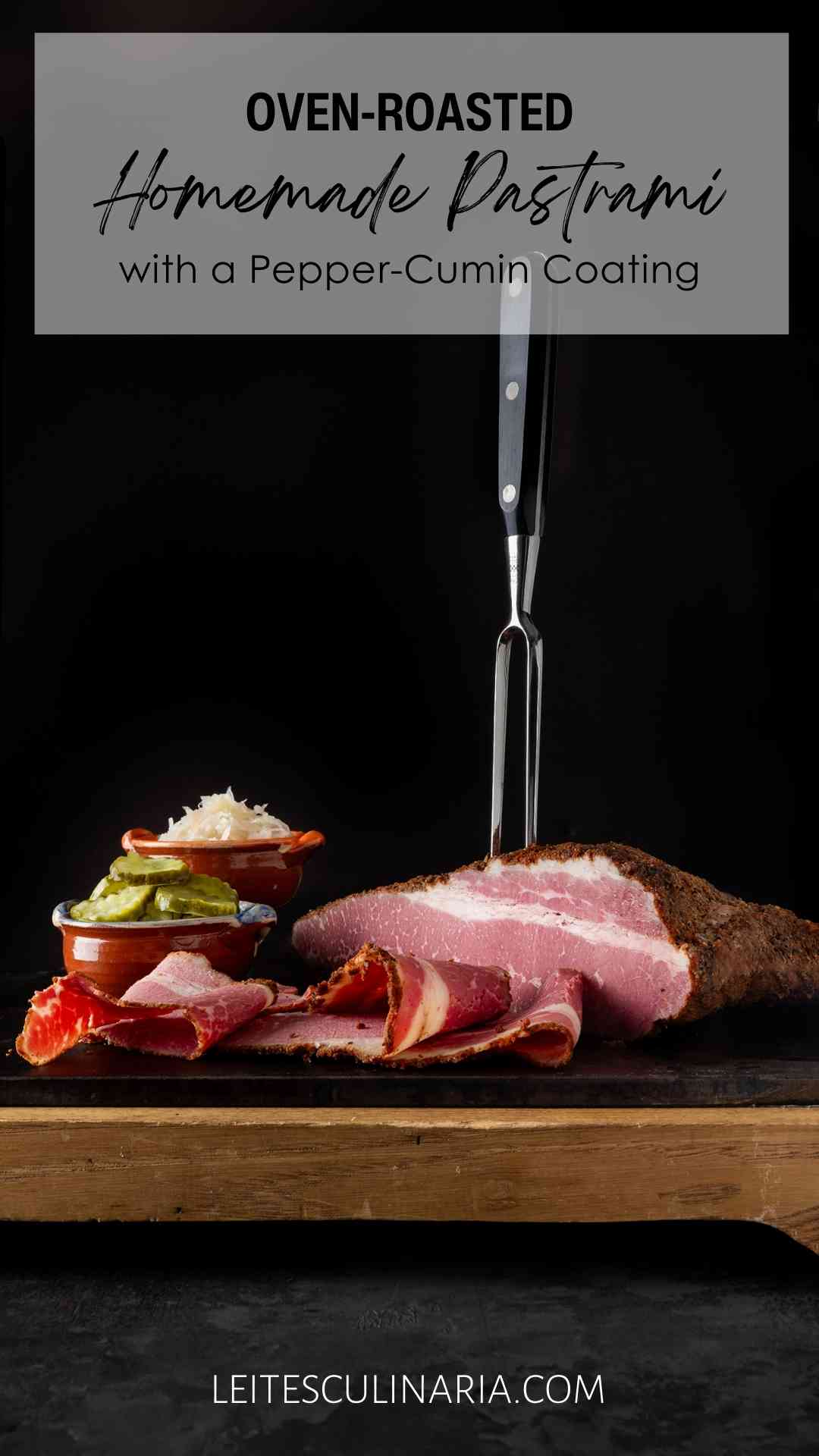
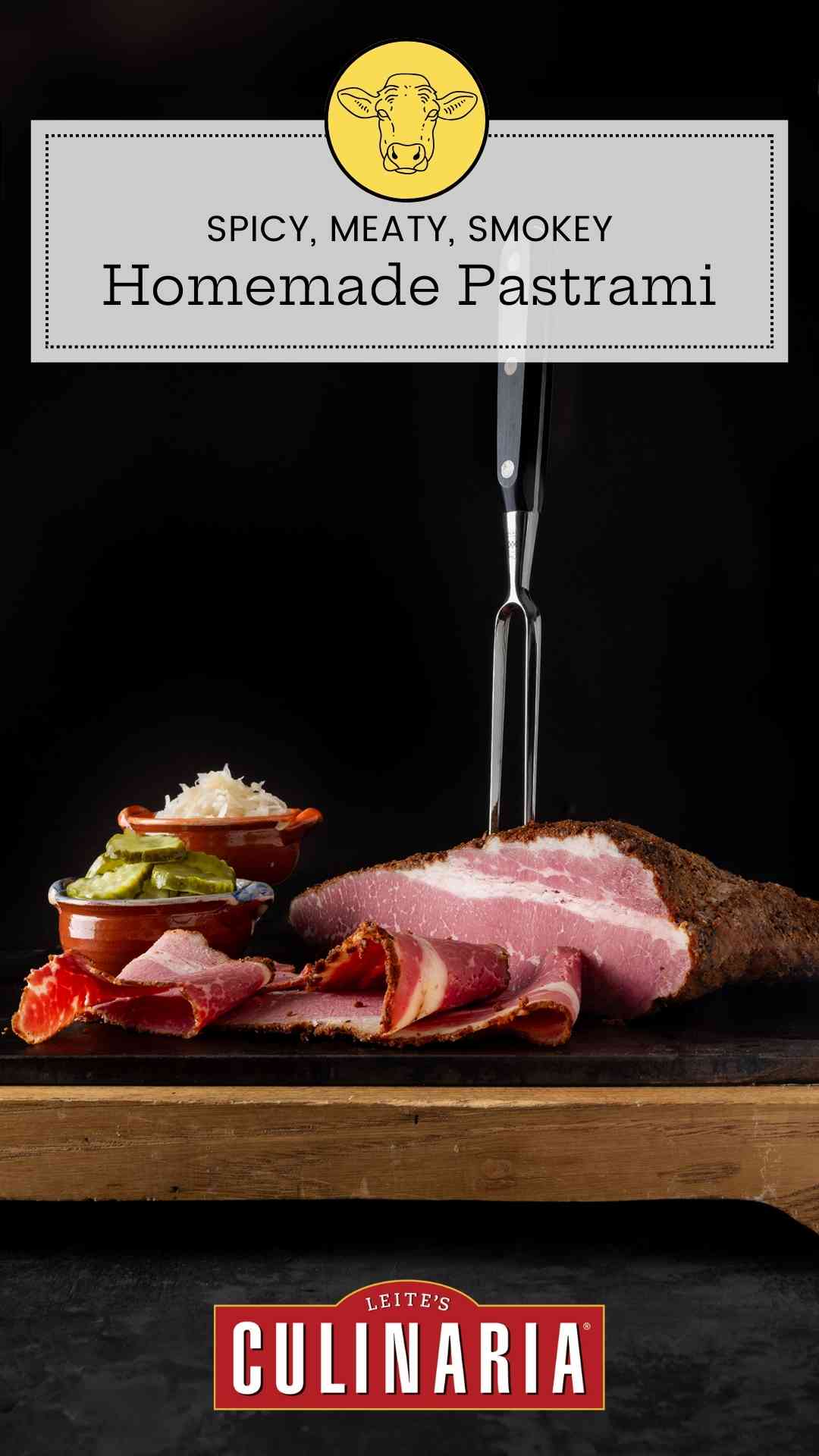
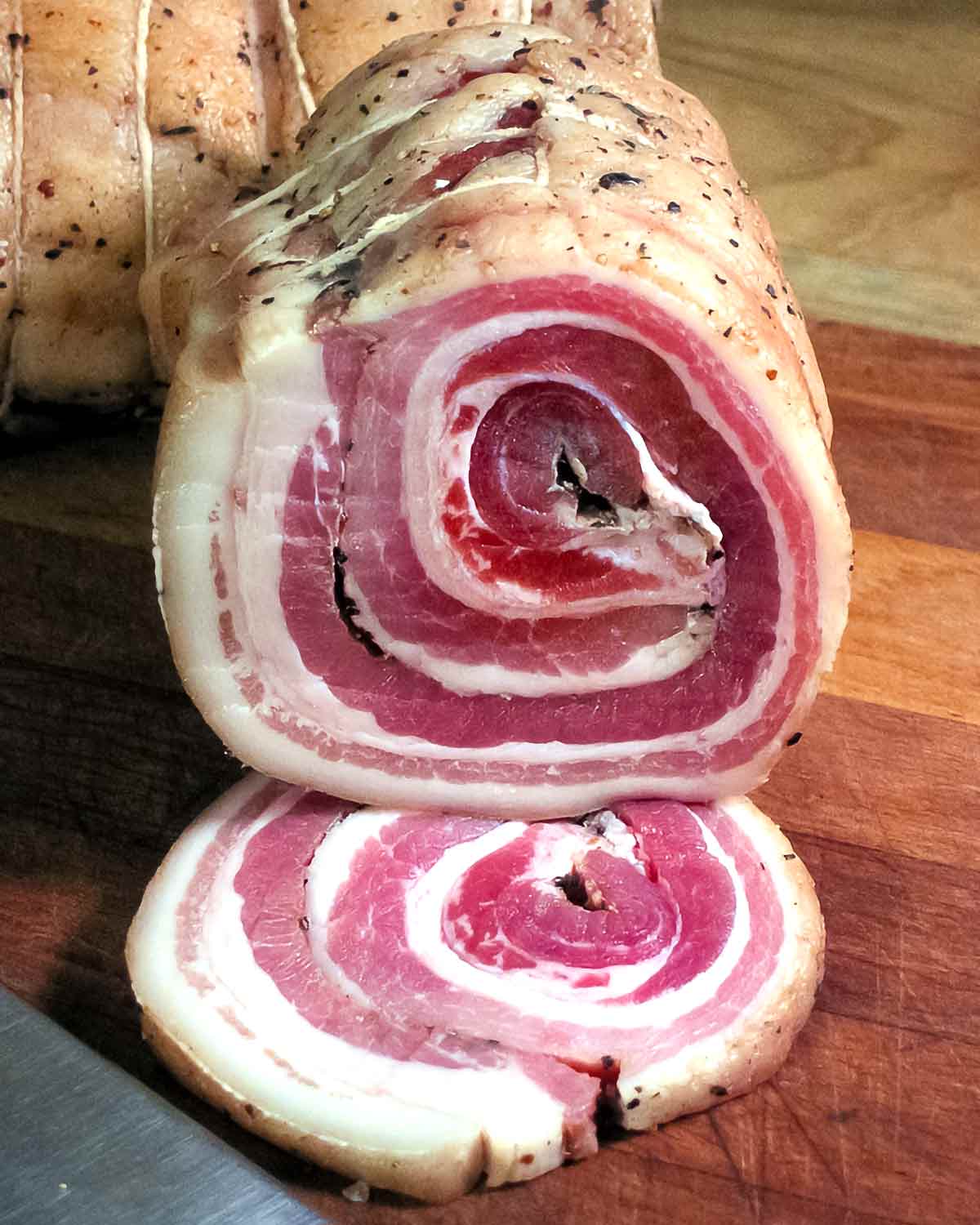
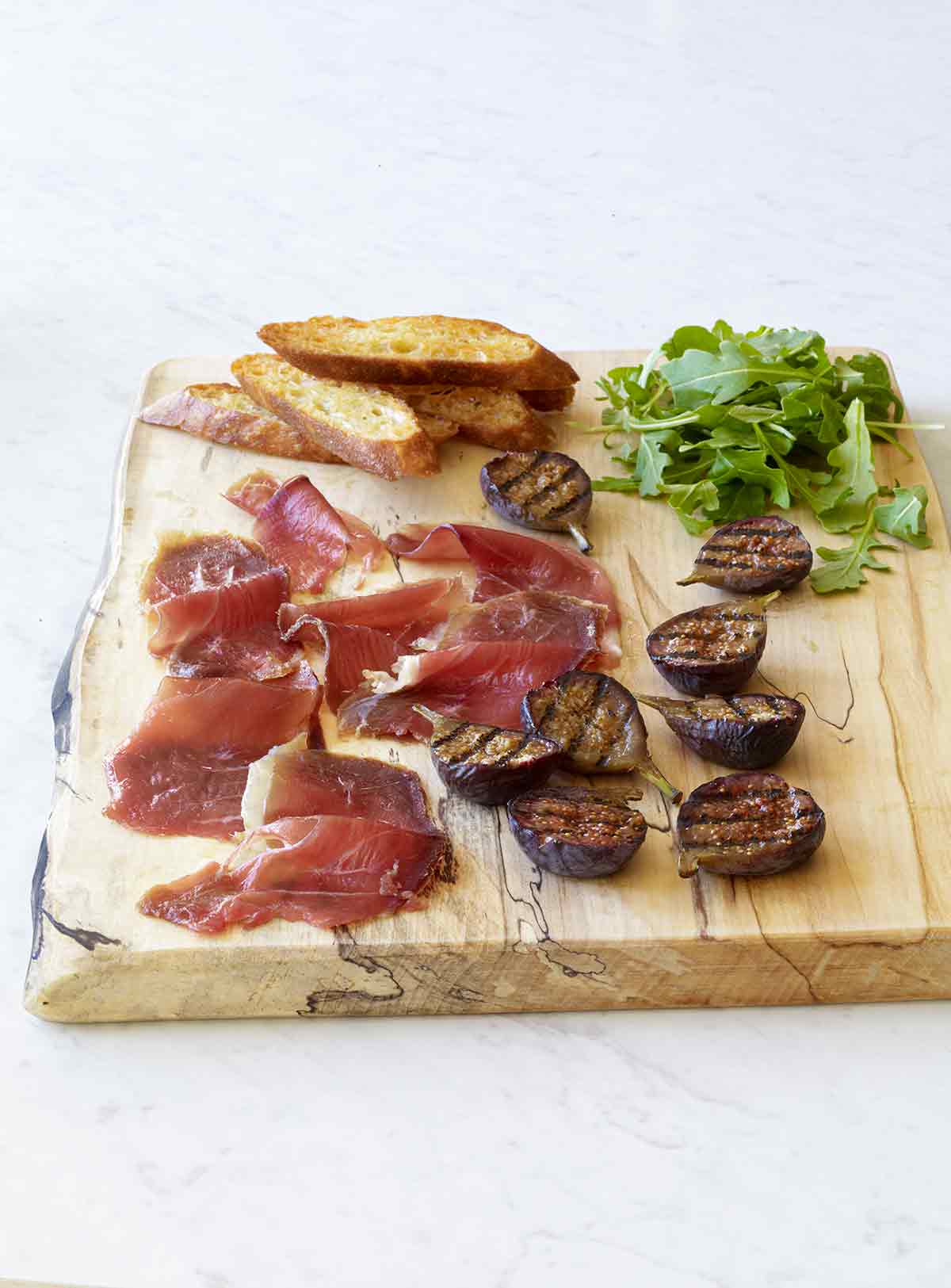
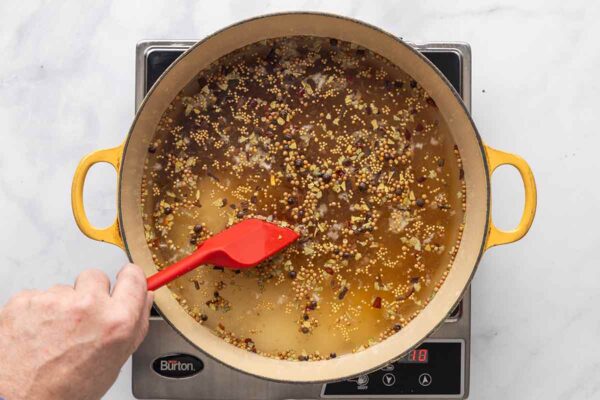
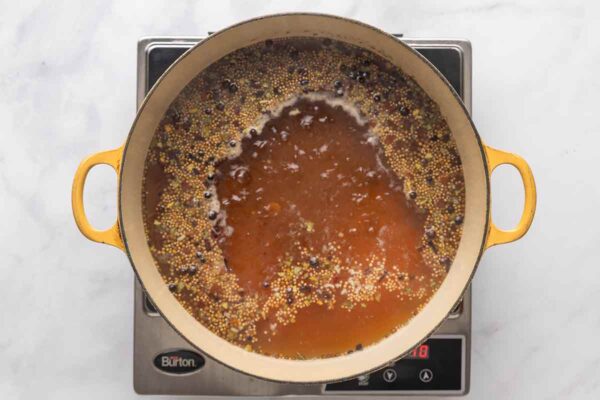
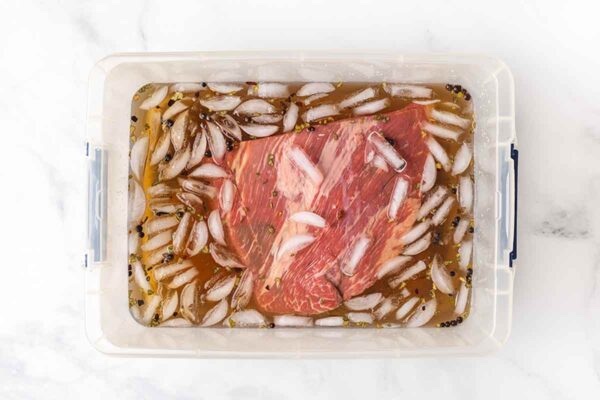
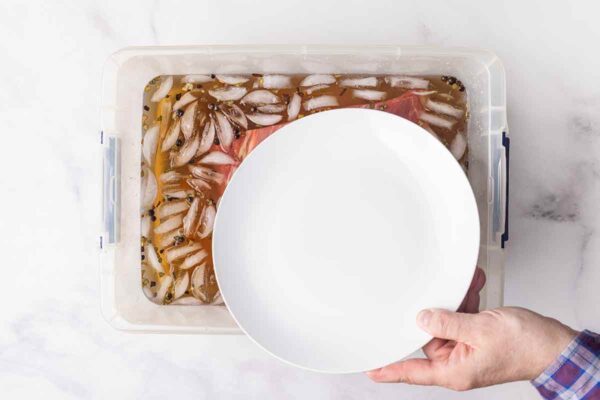
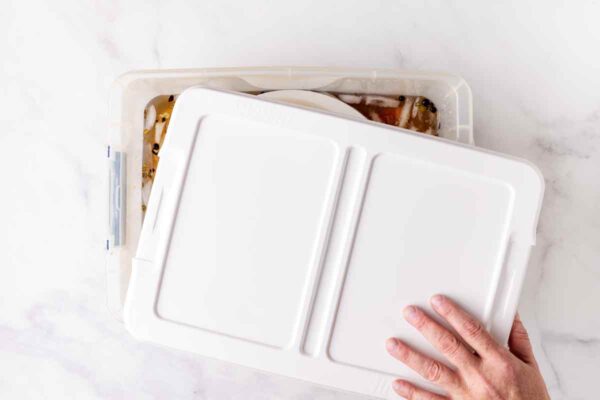
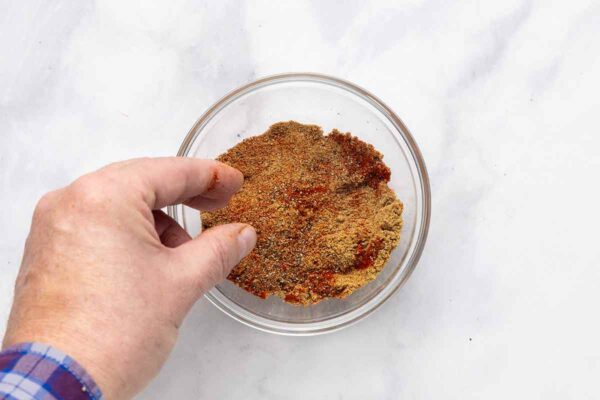
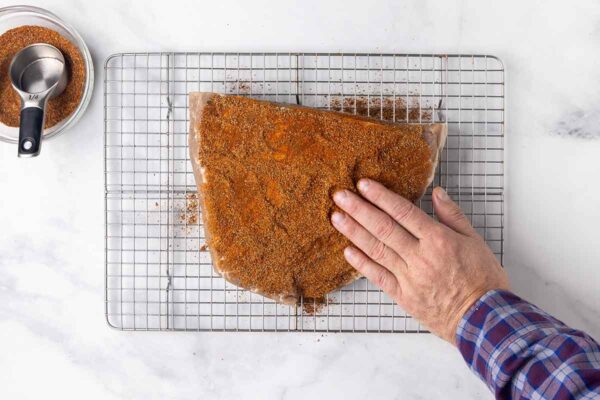














Hi David, I’ve seen recipes that recommend a dry cure for a week in the fridge, as opposed to keeping the meat in brine. Your thoughts?
Hi Ali, I’ve only made pastrami by brining it, not drying curing it. Both ways yield a good product, from the recipes I’ve seen. I think it’s really just a matter of preference.
David, thanks for your quick reply. We sliced it after we reheated it and did not think to check if we were cutting against the grain. So we’ll remember next time. And there will be a next time because the taste was superb! Thanks again.
You betcha, Audrey.
We made the smoked version yesterday and the taste was truly wonderful. We smoked it for 3 hours and then finished it in the oven until it reached 200 degrees. We then refrigerated it overnight and reheated the next day. My only disappointment was that it was too tender to slice and pretty much fell apart unless sliced very thickly. Is there a trick to the slicing?
Audrey, so glad you liked it. The fact it fell apart is a plus in my book! Tender, tender, tender. Did you cut it across the grain? Also was it completely chilled when you cut it?